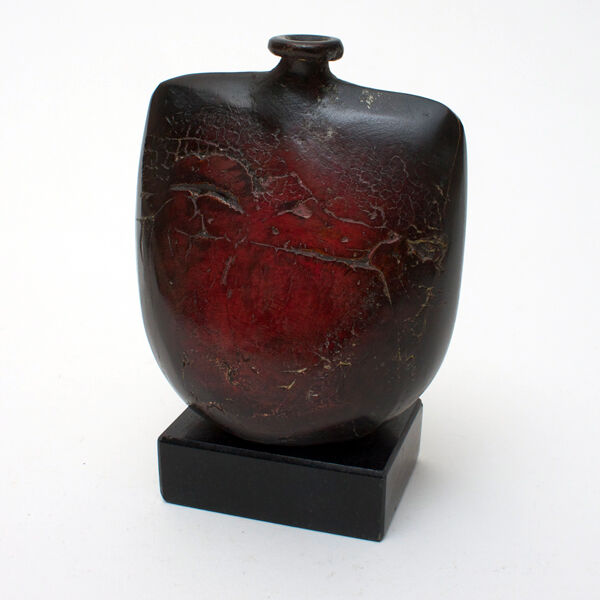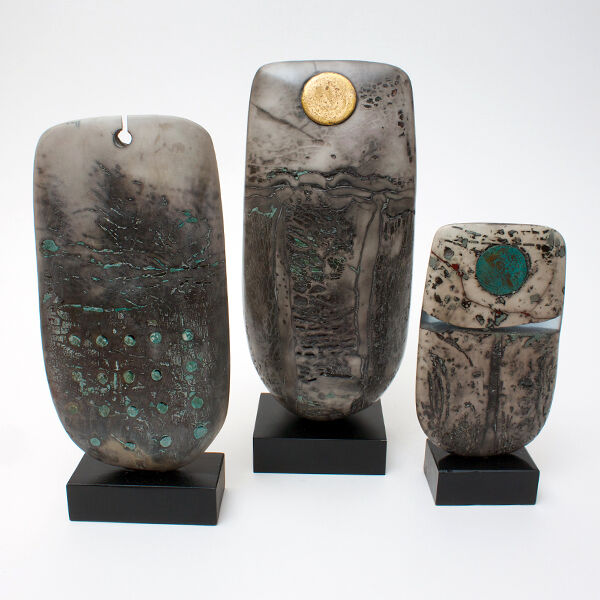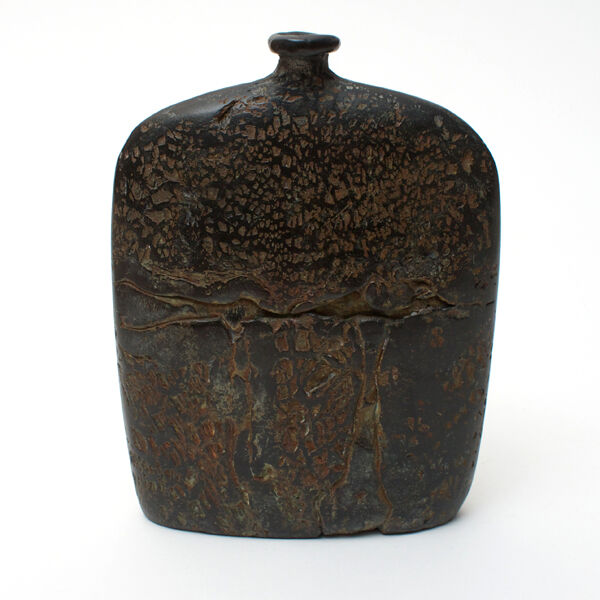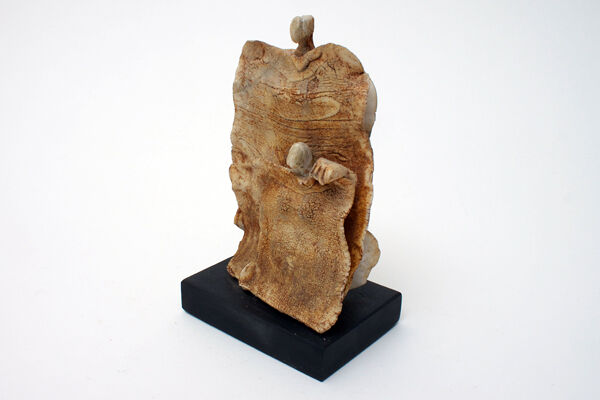Peter Hayes - Ceramic Sculptor
We are pleased to be able to represent Peter Hayes a highly regarded ceramic sculptor.
Artists statment:
"Landscapes, textures and beachcombing all play their part in the evolution of my work. I try to achieve opposites of rough and smooth by building up layers of textured clay combined with burnishing and polishing of surfaces. Similarly, leaving pieces in the sea at Cornwall or riverbed next to the studio, is a crucial part of the making process. The salts in the sea water oxideses the copper and the verdigre transports into the white clay body to give a greeny/blue 'blush' and a natural random element to the work.
In practice I go by the seat of my pants. I have always worked this way, not going by any particular rules or methods. For instance, I like doing raku firing with completely the 'wrong' clay, which I know will crack or explode in the kiln (especially when wet). But when all the pieces are stuck together and the surfaces are ground down it gives me a piece, a found object, with a pleasingly bruised and battered surface which has been carefully and lovingly honed down.
I find it joyful to work with many different clays, from bone china to crank. Each has its own character, its own limits, its own tolerance. Some clays fight back, some play the game. I think it is the clay that is in charge and it will only let you make what it wants. It is my job to push it to its limits and somehow an equilibrium is made between maker and material."

In 1972 Peter went to study ceramics in Lesotho, where he worked with the Basotho, who have a unique way of making burnished pots. Unlike the Zulu's black burnished work, the Basotho pots are bright red; sometimes orange.
Though the method and tools are very basic, the finished surfaces are wonderfully smooth to the touch. By using a polished pebble, usually gathered from the riverbank, the leather hard surface is rubbed and polished to compress the clay. By adding red slip to the surface, which has been very finely ground, a highly polished burnished surface is created.
The Basotho use dry cow dung for firing the pots. The pots are usually placed upside down to create a pyramid shape. The dry cow dung is then packed all around and covered with various bits of corrugated iron and flattened out metal oil drums and then set alight.

The whole firing process only takes three or four hours and temperatures of 600 degrees can be achieved. The finished pieces are very pleasing to the eye, with high red burnished surfaces and black carbon markings where the fuel was not entirely burnt away.
Peter has developed this technique with only slight modifications burnishing over textured surfaces and raising the temperature to approximately 1060 degrees. Peter has adapted a gas fired kiln where each piece of work is placed very close together, without touching, and a long slow flame is allowed to lick around the piece to give a very dark, red burnished appearance.



Peter's work can be found in a number of public collections.
Please see his artists profile for more information.
